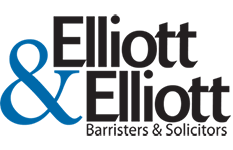New Mortgage Lending Rules
 Since 2008 following the financial crisis the Canadian government has introduced a number of important changes in relation to the housing market. The most recent changes came into effect on October 17, 2016 and relate to new lending rules. Primarily, the aim of these changes is to prevent mortgage defaults by protecting homeowners/ prospective purchasers from taking on too much debt.
Since 2008 following the financial crisis the Canadian government has introduced a number of important changes in relation to the housing market. The most recent changes came into effect on October 17, 2016 and relate to new lending rules. Primarily, the aim of these changes is to prevent mortgage defaults by protecting homeowners/ prospective purchasers from taking on too much debt.
This comes in the wake of rising house prices which have instilled a fear that there may be a greater risk of future mortgage defaults in the event of rising interest rates. These lending rule changes are likely to have important implications for homebuyers, specifically foreign purchasers and first time homebuyers who were looking to enter the housing market.
To summarize, there are three main changes that have been introduced: 1) the expansion of a mortgage rate stress test; 2) new reporting rules for financial gains made from the sale of a primary residence; and 3) restrictions on insurance for low-ratio mortgages which comes into effect on November 30, 2016. Each will be discussed in turn.
1) Expansion of the Mortgage Rate Stress Test
Under the previous regime, purchasers who were able to come up with a 20% down payment were not subject to the stress test requirements which applied to high-ratio mortgages. High-ratio mortgages are loans in situations where the purchaser had a minimum of 5% but less than 20% down payment and were thus required to obtain mortgage insurance. Following the new lending changes, a stress test will be applied to ALL new insured mortgages, regardless of the down payment amount.
A mortgage rate stress test is aimed at ensuring that borrowers can afford to make loan payments in the event that interest rates on mortgages were to rise to the Bank of Canada’s posted five-year fixed rate, which is currently sitting at 4.64%. This represents a significant increase, as some lenders, such as TD, have a five-year fixed rate of around 2.5%. Generally speaking, the negotiated loan price in the mortgage contract will be lower than the Bank of Canada’s posted rate.
The stress test also takes into account other costs related to home ownership and requires that purchasers not spend more than 39% of their total income on “home-carrying costs”. These costs include things such as mortgage payments, property taxes and heating costs.
The result of requiring a stress test for all new insured mortgages is that purchasers will likely qualify for less money. While some purchasers may qualify for mortgages at the lower posted rates, it may be difficult or near impossible for them to qualify for the higher rates. The implications of this are that purchasers will have to turn their minds towards less expensive property, save up a larger down payment, or potentially wait until the future when their income may increase (particularly in the case of first time homebuyers).
2) Reporting Rules for the Sale of Primary Residences
This change is targeted specifically at foreign purchasers out of a concern that they are falsely claiming the primary residence tax exception when flipping homes in Canada. Under the new rules, any individual who was not a resident in Canada in the year that they acquired the property will not be able to claim the exemption for that year if the property is sold after October 1, 2016.
Furthermore, as of this tax year, all sale proceeds must be reported to the Canada Revenue Agency. Importantly, financial gain from the sale of a primary residence remains tax-free, meaning that this new change largely does not have an impact on Canadian residents aside from the requirement to report the sale. Primarily, this requirement is intended to lessen the likelihood that those who are not entitled to the primary residence tax exemption are receiving it.
3) Restrictions on Insurance for Low-Ratio Mortgages
The last change, which comes into effect on November 30, 2016, is the introduction of new eligibility requirements for newly insured low-ratio government-backed mortgages. Low-ratio mortgages are those where the down payment is equal to 20% or more of the property’s purchase price.
The new restrictions effectively mean that low-ratio mortgages must now meet the eligibility criteria that previously only applied to high-ratio insured mortgages. The new criteria to obtain a government-backed low-ratio insured mortgage require a maximum amortization period of 25 years (down from 35), a property value that is below $1 million, a minimum credit score of 600 and that the property will be occupied by the owner.
Consultation on Lender Risk Sharing
In addition to the above noted changes, the government launched a public consultation process on October 21, 2016, which will consider the implications of modifying the distribution of risk within the housing financing framework. Currently, Canada maintains a system with 100% government-backed mortgage default insurance. The new consultation process will focus on the potential introduction of a lender risk sharing scheme for government-backed insured mortgages which would mean that lenders would retain a certain level of management and exposure to the risk of mortgage defaults. A change of this nature would represent a significant structural change to Canada’s housing finance system.
For more information see the Technical Backgrounder on Mortgage Insurance Rules available on the Government of Canada’s website at:
https://www.fin.gc.ca/n16/data/16-117_2-eng.asp
The content of this blog is intended to provide a general guide to subject matter. The information does not constitute legal advice and a solicitor and client relationship is not created.



 Elliott & Elliott Barrister and Solicitors
Elliott & Elliott Barrister and Solicitors





